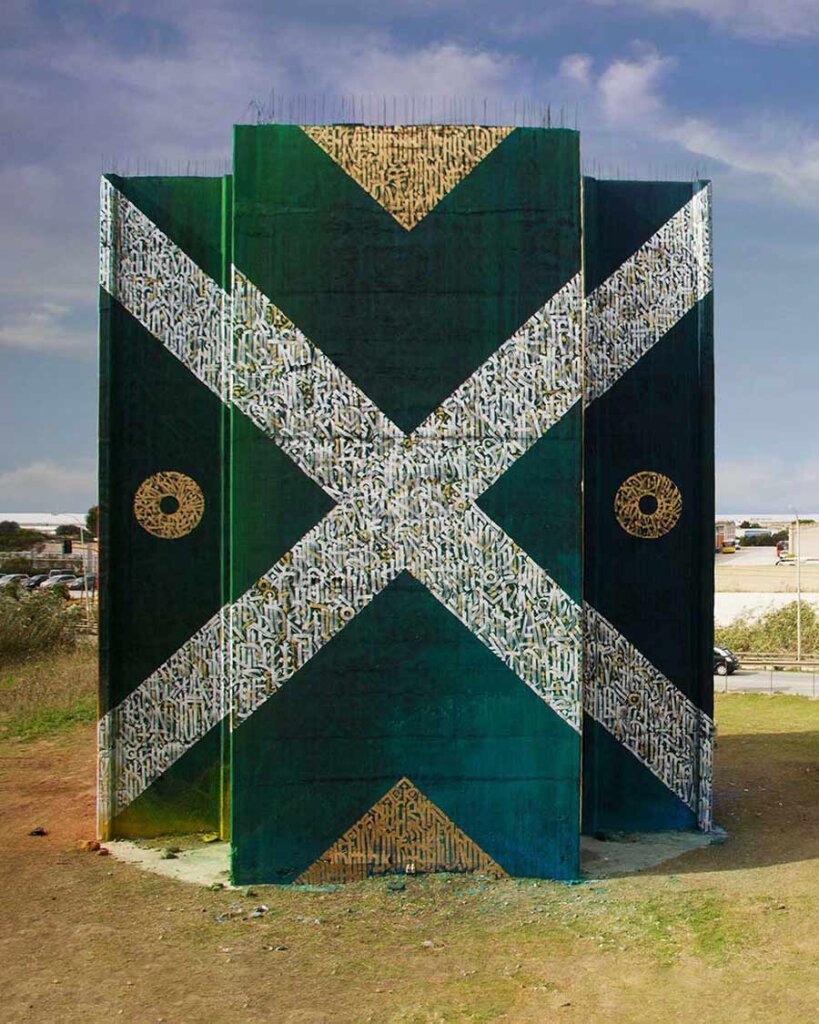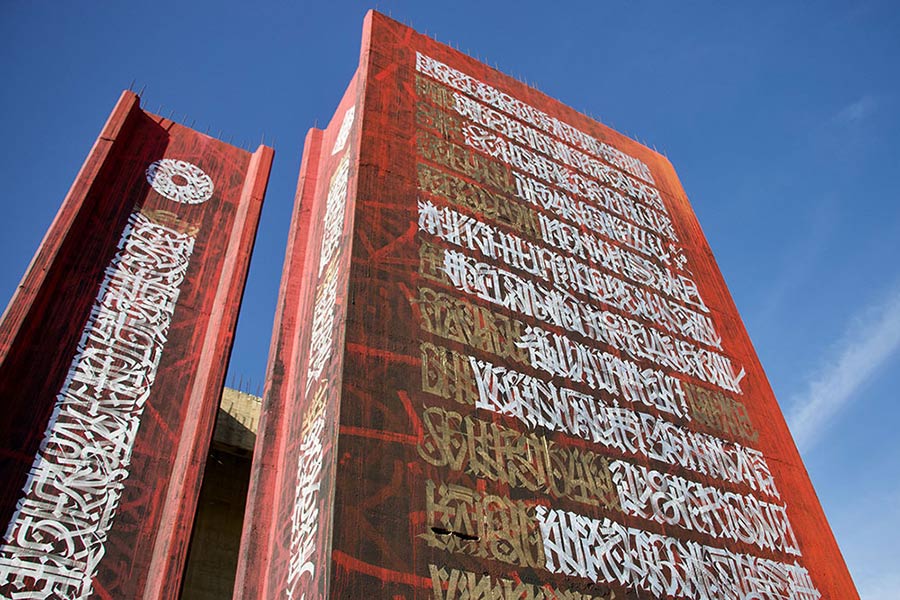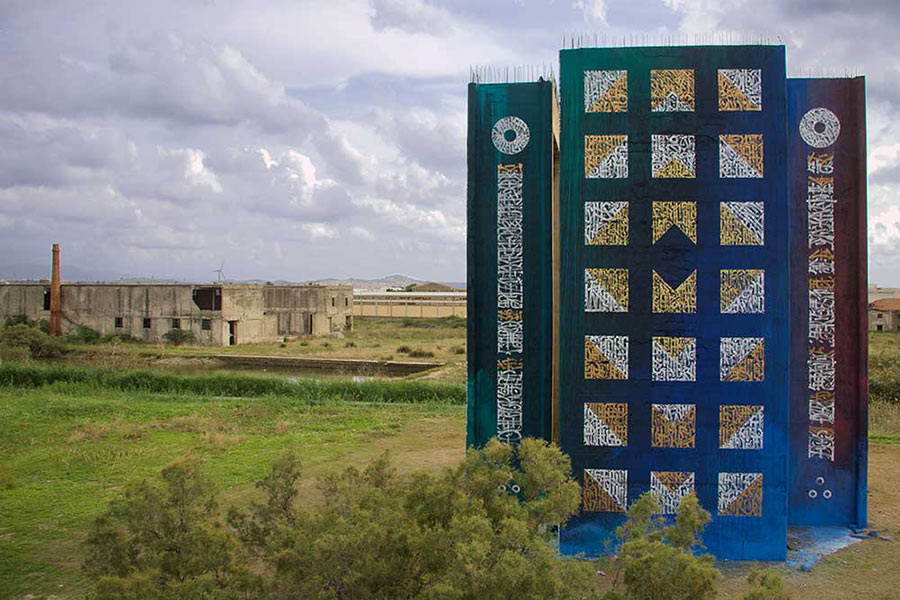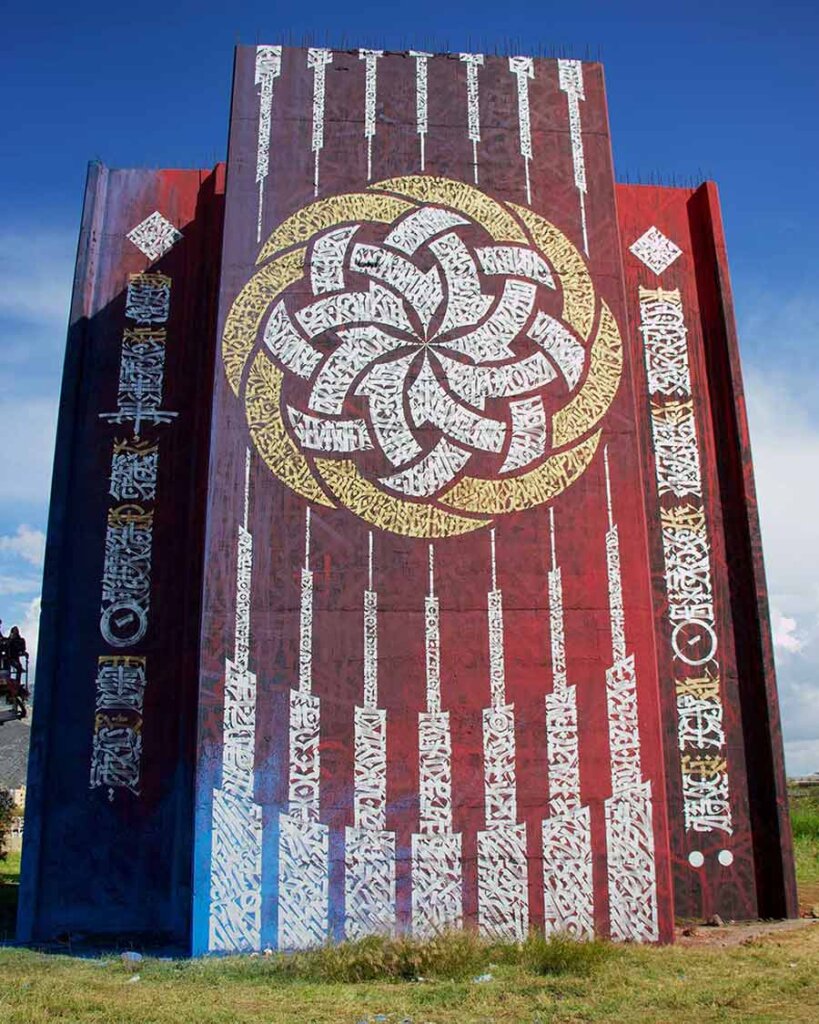Throughout Italy, there are numerous monumental infrastructure projects that were left unfinished. These contemporary ruins have endured, like traces of corruption, a testimony of the squandering that prevailed in that country between the 1950s and the 1980s.
Due to the characteristics these edifications share, they’ve been recognized as a style called the Incompiuto Siciliano, an architecture built as the big unfinished promise of modernity, affirming their artistic value and proposing a new stylistic definition.
A public art project curated by Vincenzo Cascone intends to document and breathe new life into the hundreds of brutalist ruins as they welcome them back into the communities.
Street artist Said Dokins was invited to visit one of the sites of unfinished towers and developed “Babel”, referring to the biblical tale that tells the story of the failure construction of the tallest tower, capable of reaching the sky, because of the lack of communication and understanding. It is a mural intervention on the uncompleted ruins of an architectural brutalist complex that once was supposed to be a water deposit. Four great concrete walls conform to the set, through which the artist seeks to explore the multiplicity of voices that converge in Trapani. With The Fardelliana Library and Renato Dosquiavo’s help, Dokins did a revision of antique documents, among which he selected some texts from different time periods that allowed him to reflect on political, popular, social and spiritual languages and how they relate within the vertex of past, present and the Incompiuto, as a temporary process.
It is made up of four Kubrickian monoliths that form a cross, but that represents a trick, a whirlwind of power, money, and politics. Never functional, they are nonetheless structural. By delving into the area’s history and that of Trapani, a small city on this Italian island of Sicily, Said creates his own complex tribute.
PART 1 THE PRISONER
The “X”, conformed by gold and silver letters on a deep green back, is presented as a symbol of cancellation, a way to cross out the logic of Incompiuto, through the re-writing of two ancient texts where the political language expands across time. The first one is the heartfelt call of a trapanese prisoner in Tunisia. It’s the last letter from Alberto Gaetani to his sister, dated in 1776, asking her to intercede for his life so he could go back home. The second text is a Trapanese Facio Communist manifesto, in which they described the rights workers should have access to. Their revolutionary demand, without a doubt, resists all that the Incompiuto stands for.
PART 2 THE DIALECTAL POET OF TRAPANI
Dokins takes the words from the Trapanese poet, Giuseppe Marco Calvino, bringing to our time his poem “U seculu decimu nonu“, a sharp critic on power abuse released more than 200 years ago. The artist plays with the contrast between the monumentality of his calligraphy in white and gold, which attributes to the text a sense of dignity and a voice of authority denied to the popular language used to write this poem, originally in Trapanese dialect.
PART 3 THE SLAVES
The artist takes a series of writings from the 18th century that contains a list of names, along with their physical characteristics and the work they did. It was a slave inventory. Dokins rewrites those names, making them appear in some sort of binnacle, a huge reticular design that resembles the motherboard of a computer, referring to the new cataloguing and control systems, new ways to perpetuate the slavery logic in contemporary social relations.
PART 4 THE ROSE WINDOW
Through the stylization of the iconic rose window of the church of Sant Agostino in Trapani, where symbolic elements of the three principal monotheist religions – Catholicism, Judaism and Islam- can be found coexisting in the same sanctuary, Said Dokins turns the profane, an abandoned concrete wall, in a sacred place. The juxtaposition of traditions and cults reflected in the rose window, it’s an example of the cultural diversity that converges in the Sicilian territory, with its tensions and clash. The composition is constructed by the repetition of the sentence: “Everywhere I write is a sacred place”. Writing becomes a ritual act that serves the artist to dislocate the separation between the sacred and the earthly.
Through this art intervention, Said Dokins rewrites the history of this example of the Incompiuto Siciliano Style, placed at the entrance to Trapani.
Partners; Trapani Public Art, Ligama, Gabel, Franchesca, Renato & Tito
Photo Credit Vincenzo Cascone



